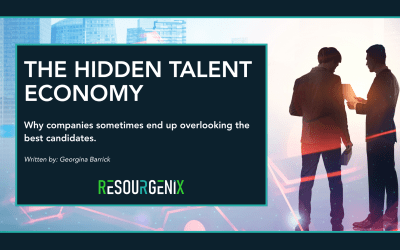Written by: Matt Mc Kay – Chief Growth officer, Resourgenix
The world of work is changing, and Managed Service Providers (MSPs) must evolve in response.
For years, MSPs have functioned as transactional partners—managing suppliers, tracking contingent workforce spend, and maintaining compliance. However, the needs of today’s workforce are more complex. At Resourgenix, we are seeing this shift in real time. The MSPs that will lead in the coming decade are those that go beyond managing services and begin orchestrating dynamic workforce ecosystems.
The Traditional MSP Model Is No Longer Enough
By 2030, MSPs will need to act as workforce orchestrators rather than administrators. The legacy approach—plugging in tools and handling backend operations—is giving way to smarter, integrated, cloud-based platforms that offer speed, visibility, and strategic value.
Modern businesses are no longer content with transactional vendors. They seek workforce solutions that streamline operations, reduce vendor sprawl, support digital transformation, and embed sustainability and compliance. We recently supported a client’s shift from a fragmented supplier model to a consolidated solution powered by a vendor management system (VMS) and real-time analytics. The outcome was greater visibility, reduced risk, and more informed workforce decisions.
From Service Provider to Strategic Workforce Platform
MSPs are rapidly becoming platform-centric. They now act as the central nervous system for managing the non-permanent workforce, integrating tools such as VMS (e.g., SAP Fieldglass), HRIS (e.g., Workday), and ITSM platforms (e.g., ServiceNow).
At Resourgenix, our scope has expanded significantly. We are not just managing contractors—we are integrating freelance, gig, and statement-of-work talent into a unified view. We automate onboarding, ensure compliance across multiple jurisdictions, and provide reporting on diversity, equity, inclusion, and ESG, all from one platform. This evolution isn’t just about adopting new technology. It’s about simplifying complexity and helping organisations gain control and agility amid constant change.
Lessons from the Telco World
My earlier career at Cisco, Citrix, and BT Global Services offered deep insights into the importance of infrastructure and integration. At BT, we built global platforms designed for resilience, scale, and service assurance.
At Resourgenix, we apply the same thinking to contingent workforce solutions. Just as telecom providers moved from voice to data, today’s MSPs must transition from administrative support to intelligent infrastructure partners. This means embedding governance, compliance, and user experience across every workforce interaction.
What Clients Actually Want
Despite the hype around AI, automation, and data lakes, MSP clients ultimately want practical solutions. They need help managing risk, navigating compliance requirements, integrating multiple technologies, and maintaining business continuity.
The modern MSP is no longer just a back-office function. It is a strategic enabler. That is exactly what we are building at Resourgenix—an MSP model that brings clarity, control, and compliance to workforce programs.
Analyst Insights: The Platform-Led Future
Analysts agree on where the industry is headed:
- Forrester projects MSPs will evolve into full-service talent ecosystems.
- IDC forecasts that over 60% of digital services will be delivered through modular, API-connected platforms by 2028.
- Canalys reports that most MSPs expect strong growth in cybersecurity, cloud, and automation services.
These trends echo what we’re hearing from our clients. They want streamlined solutions, data-driven insights, and partners who can guide them through a fast-changing landscape.
Final Thought: Adaptation Is No Longer Optional
At Resourgenix, we view this moment not as a gradual evolution but as a reinvention of the MSP model. The opportunity is immense for providers who can deliver scalable workforce solutions with clarity and confidence.
The future of contingent workforce management will belong to those who stop thinking like administrators and start building like architects.
The question is no longer if MSPs will change—it’s whether they’ll rise to the challenge in time.




